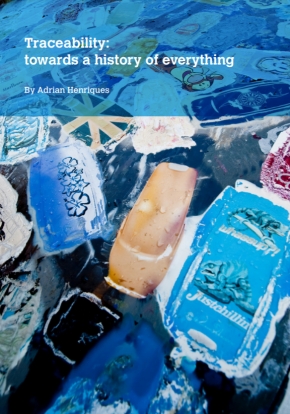Traceability
‘Momentum building for cattle traceability’ according to Beef Magazine. The New York Times is asking ‘Will blockchain fix the mineral traceability woes?’ The Aluminium Stewardship Initiative has created a standard with a traceability mechanism to ensure that certified aluminium has been manufactured by certified producers at every stage. Meanwhile BIM Today reports that ‘verification processes and technology…improve quality by applying the concept of traceability, while reducing risk and waste’.
So traceability is in the news. And it is easy to find examples from almost any industry of how traceability is rising up the agenda. The drivers of this are both commercial and ethical. Traceability not only makes financial sense, but it is also the principal means of delivering sustainability – both social and environmental – in the supply chain.
Blockchain is often touted as the answer to traceability. But the problem is not as simple as that. Of course blockchains can help data to remain secure, but you have to get the right data into your systems in the first place. A blockchain can preserve false data as easily as it can preserve correct data.
But what data do you need in order to provide a useful level of traceability? And how much traceability do you already have in your supply chain? What about the demand chain – the activities down through the consumer to the end of life or re-cycling?
Adrian Henriques paper, ‘A History of Everything’ tries to answer some of those questions. It looks at what traceability means, how it needs to be distinguished form Chain of Custody, and what information you may need to capture to deliver it.
This article was originally published on 25 February 2019 as 'How much traceability is enough' on BRE Buzz. It was posted by Adrian Henriques.
--BRE Buzz
[edit] Related articles on Designing Buildings Wiki
Featured articles and news
A change to adoptive architecture
Effects of global weather warming on architectural detailing, material choice and human interaction.
How big is the problem and what can we do to mitigate the effects?
Overheating guidance and tools for building designers
A number of cool guides to help with the heat.
The UK's Modern Industrial Strategy: A 10 year plan
Previous consultation criticism, current key elements and general support with some persisting reservations.
Building Safety Regulator reforms
New roles, new staff and a new fast track service pave the way for a single construction regulator.
Architectural Technologist CPDs and Communications
CIAT CPD… and how you can do it!
Cooling centres and cool spaces
Managing extreme heat in cities by directing the public to places for heat stress relief and water sources.
Winter gardens: A brief history and warm variations
Extending the season with glass in different forms and terms.
Restoring Great Yarmouth's Winter Gardens
Transforming one of the least sustainable constructions imaginable.
Construction Skills Mission Board launch sector drive
Newly formed government and industry collaboration set strategy for recruiting an additional 100,000 construction workers a year.
New Architects Code comes into effect in September 2025
ARB Architects Code of Conduct and Practice available with ongoing consultation regarding guidance.
Welsh Skills Body (Medr) launches ambitious plan
The new skills body brings together funding and regulation of tertiary education and research for the devolved nation.
Paul Gandy FCIOB announced as next CIOB President
Former Tilbury Douglas CEO takes helm.
UK Infrastructure: A 10 Year Strategy. In brief with reactions
With the National Infrastructure and Service Transformation Authority (NISTA).
Ebenezer Howard: inventor of the garden city. Book review.
Airtightness Topic Guide BSRIA TG 27/2025
Explaining the basics of airtightness, what it is, why it's important, when it's required and how it's carried out.























